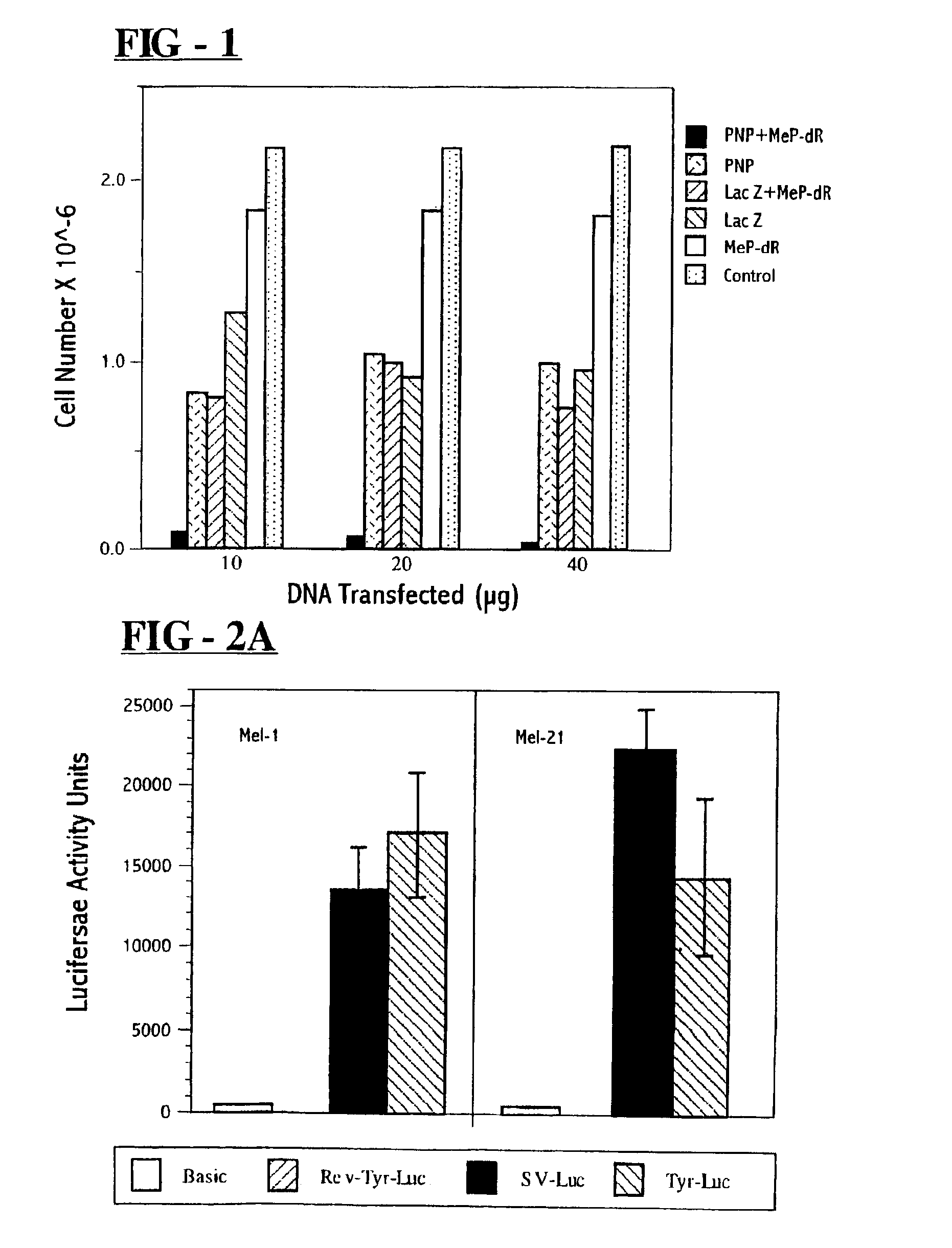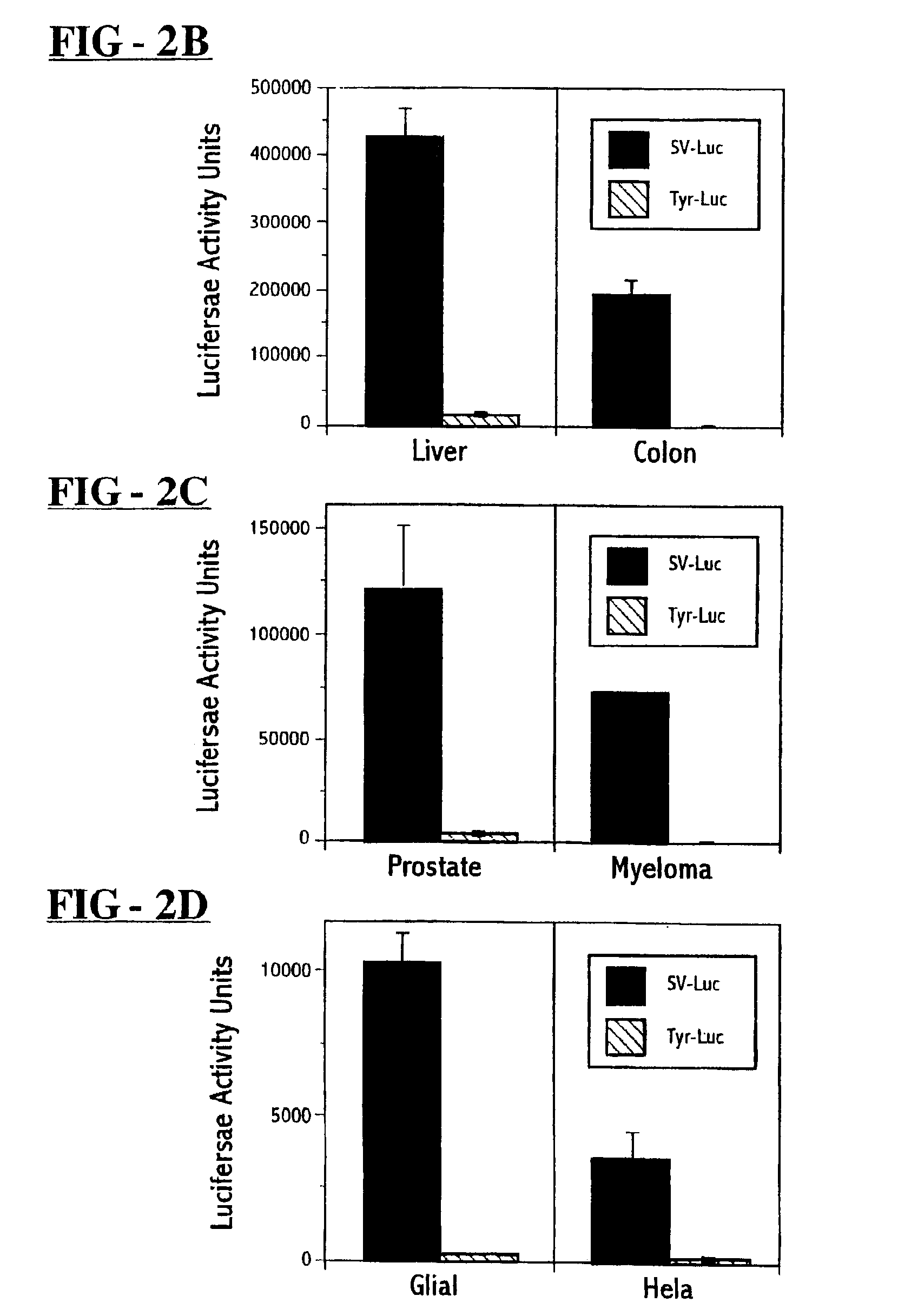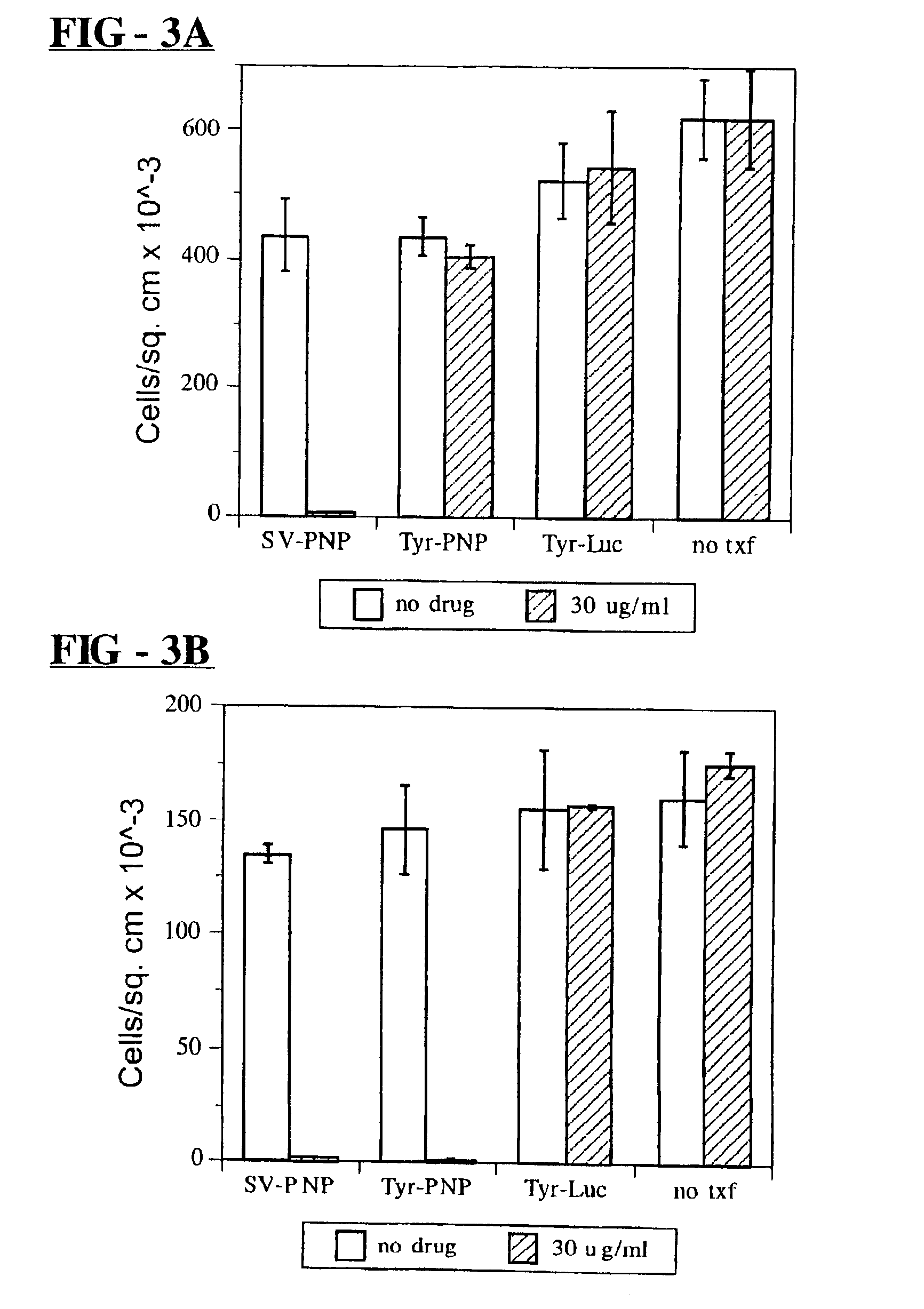Recombinant bacterial cells for delivery of PNP to tumor cells
a technology of tumor cells and recombinant bacterial cells, which is applied in the field of cancer therapy, can solve the problems of insufficient bystander killing, ineffective gene delivery, and no recombinant enzyme or toxin has proven useful in mediating high levels of toxicity in unselected tumor cells, and achieves small effect on tumor growth, inhibited the growth of these tumors, and high level bystander
- Summary
- Abstract
- Description
- Claims
- Application Information
AI Technical Summary
Benefits of technology
Problems solved by technology
Method used
Image
Examples
example 1
Cell Lines
[0075]T-84 colon carcinoma cells were grown in Dulbecco's modified Eagle medium containing F12 nutrient medium (DMEM / F12) (GIBCO / BRL, Gaithersburg, Md.) in 6 well trays to a density of approximately 1-2×103 cells / well (−20% confluency).
example 2
Toxicity of MeP and MeP-dR within Colon Carcinoma Cells
[0076]Untransfected T-84 colon carcinoma cells were treated with increasing concentrations of either MeP-dR or MeP. After 5 days the cells were removed from each well and the number of dye excluding cells were determined with the aid of a hemacytometer. Cells were studied both at passage 48 (p. 48) and passage 61 (p. 61). MeP was obtained from Sigma Chemical Company (St. Louis, Mo.). MeP-dR was synthesized by standard methods as described (J. A. Montgomery and K. Howson, J. Med. Chem., 11:48-52 (1968)). The nucleoside and base were dissolved in serum free DMEM / F12 at a concentration of 1 mg / ml and added directly to 1 ml DMEM / F12 with 10% fetal bovine serum at the concentrations described below in order to cover 1-2×105 cells / well.
[0077]Initial cytopathic effects due to MeP were observed within 24 hours (for example, rounding of cells, with some cells detaching from plate). Viable cells were counted 5 days following addition of d...
example 3
Synthesis of E. coli PNP Expression Vectors
[0079]A bacterial PNP-encoding sequence was inserted into a plasmid expression vector. E. coli (strain, JM101) chromosomal DNA template was obtained using the method described in N. J. Gay, J. Bacteriol., 158:820-825 (1984). Two PCR primers GATCGCGGCCGCATGGCTACCCCACACATTAATGCAG (SEQ ID NO: 1) and GTACGCGGCCGCTTACTCTTTATCGCCCAGCAGAACGGA-TTCCAG (SEQ ID NO: 2) were used to define the full length coding sequence of the E. coli DeoD gene and to incorporate NotI sites at both 50 and 30 ends of the desired product. After 30 cycles of amplification (94° C.×1 minute denaturation, 50° C.×2 minute annealing, and 72° C.×3 minute elongation using 1 ng template, 100 μl of each primer in a 100 μl reaction mixture containing 2.5 units taq polymerase, 200 μM each dNTP, 50 mM KCl, 10 mM Tris Cl (pH 8.3), 1.5 mM MgCl2 and 0.01% gelatin (weight / vol)), a single PCR product of the predicted size (716 base pairs) was obtained. This product was extracted with phen...
PUM
| Property | Measurement | Unit |
|---|---|---|
| Mass | aaaaa | aaaaa |
| Fraction | aaaaa | aaaaa |
| Fraction | aaaaa | aaaaa |
Abstract
Description
Claims
Application Information
 Login to View More
Login to View More - R&D
- Intellectual Property
- Life Sciences
- Materials
- Tech Scout
- Unparalleled Data Quality
- Higher Quality Content
- 60% Fewer Hallucinations
Browse by: Latest US Patents, China's latest patents, Technical Efficacy Thesaurus, Application Domain, Technology Topic, Popular Technical Reports.
© 2025 PatSnap. All rights reserved.Legal|Privacy policy|Modern Slavery Act Transparency Statement|Sitemap|About US| Contact US: help@patsnap.com



